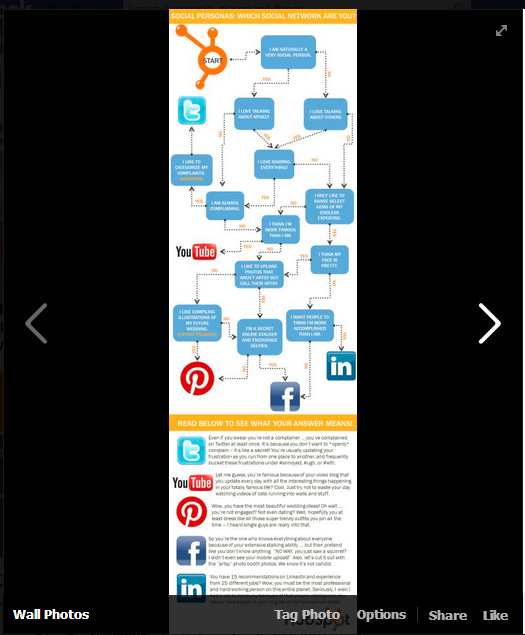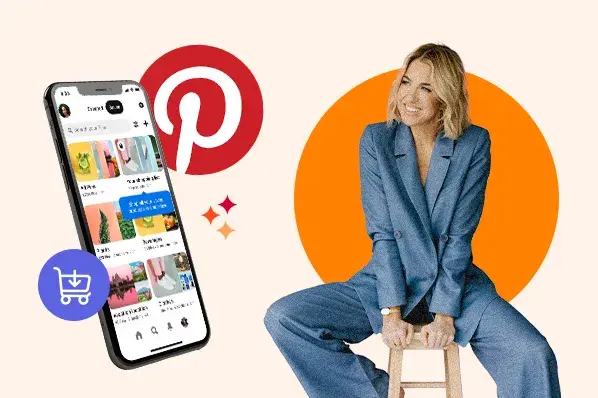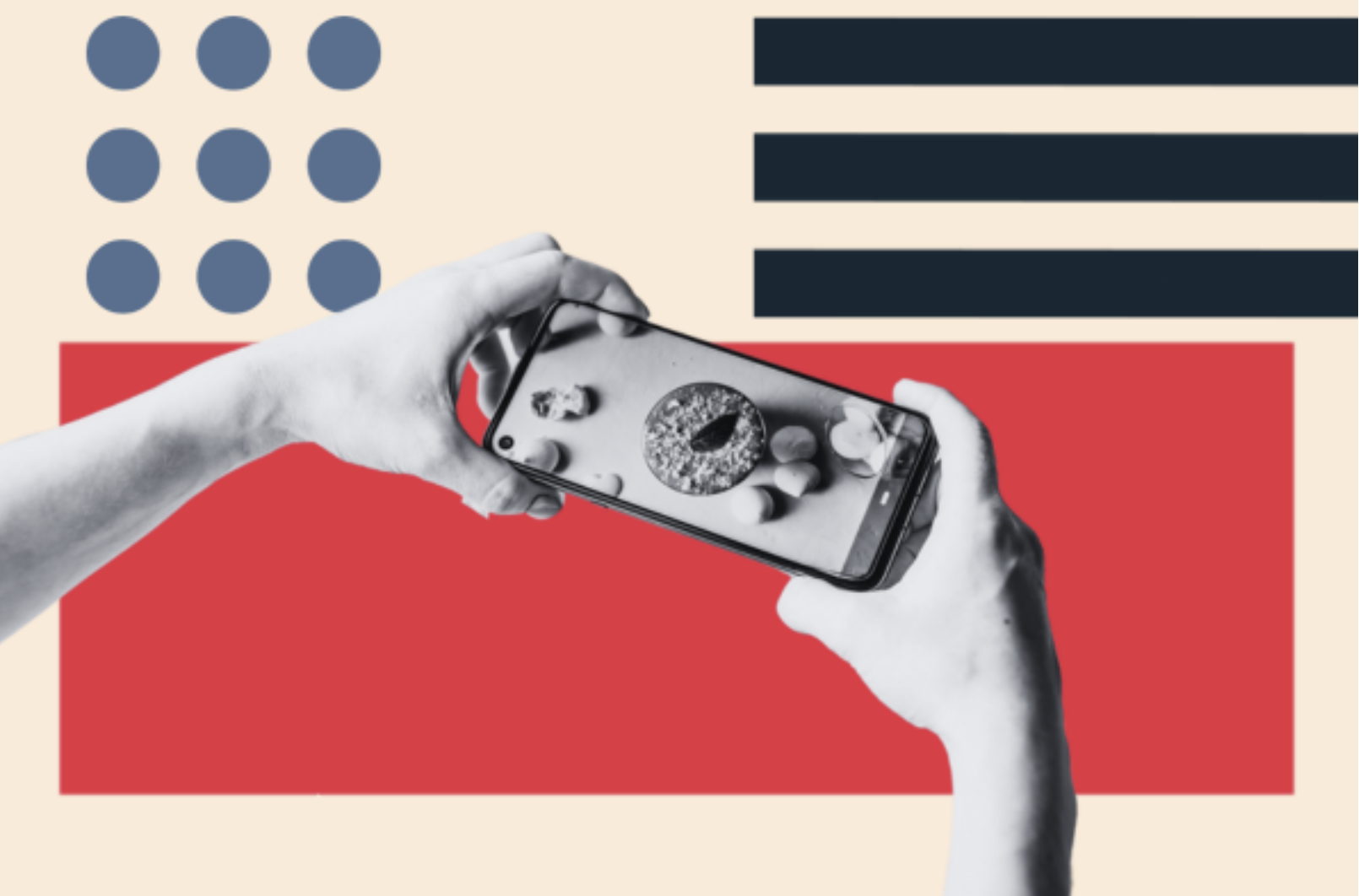Visual content has become one of the most desirable types of content -- because it's so darn easy to consume. But it's not enough to just create beautiful, funny, engaging visual content ... marketers are now wondering where the best place to promote that visual content is.
Just about every major social network allows marketers to share visual content in some capacity, but that doesn't necessarily mean that particular network is the best medium for visual promotion. And in a world of hundreds of social networks, marketers need to optimize their time to promote the most appropriate types of content on the most appropriate channels.
Until now, it's seemed like Pinterest really takes the cake in terms of the best social network for visual content promotion. But recently, Facebook launched a little something called Collections, which is a Pinterest-style feature that allows users to add products to a wishlist or curate them into a particular list. Sounds kind of like Pinterest, doesn't it?
It did to us. So it got us thinking ... which is the better social network for promoting visual content? Pinterest, or Facebook? I'm sure you'll come up with your own opinion, but let's evaluate both sides of the coin right now and see if we can't figure this thing out, using some fascinating statistics as fodder for our debate.
98% of people surveyed with a Pinterest account said they also have a Facebook and/or Twitter account.
Facebook has over 900 million active users -- 500 of whom are estimated to use Facebook daily. Meanwhile, Pinterest has over 10 million users, 98% of whom have a Facebook and/or Twitter account.
Clearly, Facebook has a much larger audience. And when it comes to sharing content online, you want it to reach as many people as possible. Duh. As such, Facebook's larger active user base covers a wider spectrum of people, whereas Pinterest's user base aligns with some really specific demographic and psychographic traits. I mean, sure, most business could be successful on Pinterest if they thought outside the box, but the fact remains the users there are certainly more apt to gravitate towards lifestyle-oriented products.
If Pinterest is so targeted, wouldn't it then be better for your diverse visual content to be on Facebook, where it can be seen by more people ... and a wider variety of people? That way if you post something more data-driven, or perhaps targeted to a male audience, you'd see greater success. And even if you posted something that would do well on Pinterest, most of those users are likely already using Facebook! So you'll still reach them.
Winner: Facebook
Publishers who use infographics grow in traffic an average of 12% more than those who don't.
This AnsonAlex stat shouldn't come as a surprise -- infographics helped accelerate the visual content revolution. Content creators everywhere are finding ways to create and share infographics to help increase their reach and generate leads. One way to accelerate that reach is by sharing these infographics on social media.
But this actually presents a big problem when it comes to posting infographics on Facebook: Facebook is horizontal image friendly, and square image friendly. So any image you post on Facebook can either have a nice square look, or if you make it your cover photo or use the 'Highlight' tool, it can be a nice horizontal image. There's no place, however, for a clean vertical image on your business page, or in your news feed. Therefore, when you upload an infographic, you quickly see how teeny weeny it publishes ...

... so teeny that you can't read a darn thing! This has left marketers to post links or a cropped version of the infographic to help pull readers in on Facebook.
On Pinterest, however, one can upload boards and boards full of infographics -- and you can see them beautifully! It's a place where people can easily pin and re-pin amazing infographic creations without having to worry about sharing a link where the user can see the rest of the infographic ... or buy a magnifying glass to see what the image is about. People love browsing infographics on Pinterest so much, in fact, there are entire boards dedicated to infographics!
Winner: Pinterest
On Facebook, photos perform best for Likes, comments, and shares.
This data comes to us via HubSpot's social media scientist, Dan Zarrella. One of the major reasons you should be using visual content is because of the power images have on increasing your reach. The more your images are shared through social networks, the more people your brand becomes visible to.
How does this play into our Pinterest vs. Facebook faceoff? Well on Pinterest, you can Like content, but that doesn't necessarily work its way into a news feed where people actively see that others are liking the pin. The way most content is seen on Pinterest is through repins.
On Facebook, however, content that is interacted with via likes, comments or shares directly impacts its visibility in user news feeds. And on Facebook, the world's largest social network, photos perform best. Naturally, the more images you share -- and the more they are interacted with, of course -- the more people your visual content (and your brand) reach. Pinterest is unfortunately limited to repinning.
Winner: Facebook
Pinterest drives sales directly from its website -- of people with Pinterest accounts, 21% have purchased an item after seeing it on Pinterest.
This information comes to us courtesy of ComScore and Nielsen. At the end of the day, the visuals you're sharing on your social channels is a way to introduce people to your brand. Whether it's through showing your product, or taking a more indirect route and publishing an image that simply gets a lot of shares, your visual content is a strategy for warming up users to your brand so they ultimately take some kind of transactional action.
Pinterest can directly lead to sales because users can be redirected to a business' website by clicking on the image -- right to, say, a product page? ;-) But now Facebook has its 'Collections' feature in beta, as mentioned earlier in this post. This new feature will allow users to easily bucket or "collect" products they like on Facebook business pages into wishlists for purchase. It's essentially a shopping cart -- something that Pinterest does not have.
The question now is, will the ability to save items into a wishlist for later prove a better way to purchase than clicking on a link and being sent directly to the site for purchase? For now, Pinterest clearly has the win with the impressive stat on correlation to sales ... plus it's available to all users. But as Facebook Collections is launched and perhaps adopted, it'll be important to watch if this changes.
Winner: Pinterest
40% of people respond better to visual information than plain text.
This stat from Zabisco leaves us in a toss up between Pinterest and Facebook. When users browse on Pinterest, they already know that they're looking at visual content. They have no choice to respond "better" or "worse" because all of the content is visual. But at the same time, perhaps the fact that Pinterest is all images creates more opportunity to respond well to the content!
Meanwhile, on Facebook, users are browsing a news feed full of both text and images. So when they see an image, they have the ability to respond "better" to that image because it's capturing their interest in a sea of text and links.
So the question is ... does Pinterest being comprised exclusively of images mean users are responding more positively all the time, or does Facebook see a more amplified positive response due to the intermittent images? Until we can figure that out more conclusively, we say ...
Winner: Tie
Viewers are 85% more likely to purchase a product after watching a product video.
This stat comes courtesy of Internet Retailer. And it's an excellent reminder that we shouldn't forget that video is visual content, too! If viewers are 85% more likely to purchase a product after watching a video, your business sure as sugar better be creating video content.
Both Facebook and Pinterest allow you to upload video content. Even better, both allow users to view the video content right from that social network. There are small features that could work in each respective network's favor, but for the most part, both networks provide the same option. On Facebook, you can have the video playing while navigating around the rest of that business page or news feed. But on Pinterest, the video pops open and is still on your screen -- you can't navigate without closing the video. On the other hand, when you click on the video on Pinterest, it merely pauses and plays; when you click on a video on Facebook a second time (after the initial to play), it redirects you to YouTube, interrupting the user's experience.
Winner: Tie
So, Which Social Network is Better for Visual Content?
Here comes the answer that everyone hates to hear: it depends! Marketers should be evaluating what exactly they want to gain from sharing visual content, and then figuring out which social network helps them achieve that end. Perhaps your business is solely interested in sharing visuals for brand awareness and reach, for instance -- in that case, you might want to focus your efforts more on Facebook. But if your business is trying to drive purchases of a product, you might see more luck on Pinterest ... depending, of course, of your industry and target demographic. Continue to experiment with different social networks, and of course, let us know which one you think is better for promoting your visual content!
Pinterest Marketing





![18 Pinterest Metrics to Start Tracking ASAP [+ Tools]](https://53.fs1.hubspotusercontent-na1.net/hubfs/53/pinterest-analytics.webp)


![Key Pinterest Marketing Tools and Tips You Need [+ Recs for Small Businesses]](https://53.fs1.hubspotusercontent-na1.net/hubfs/53/marketer-using-pinterest-marketing-tips-for-strategy%20(1).jpg)

.jpg)
.jpg)
![How to Use Pinterest to Promote Your Business or Blog [Free Templates]](https://53.fs1.hubspotusercontent-na1.net/hubfs/53/Pinterest%20for%20Marketing.jpg)